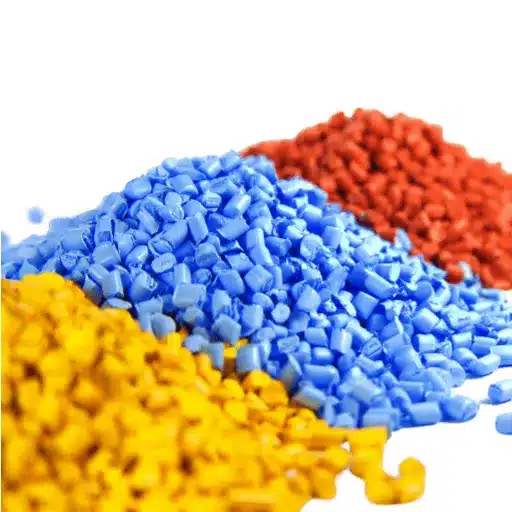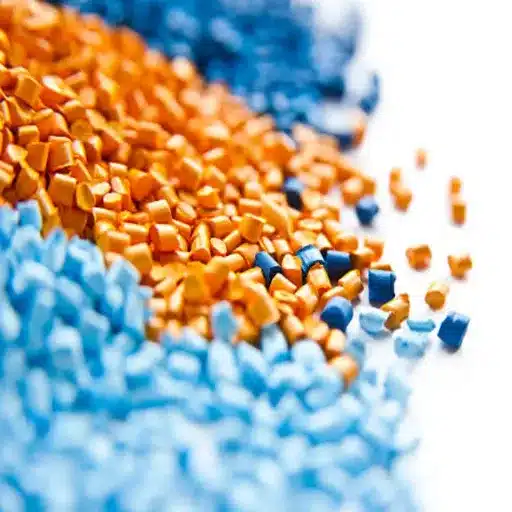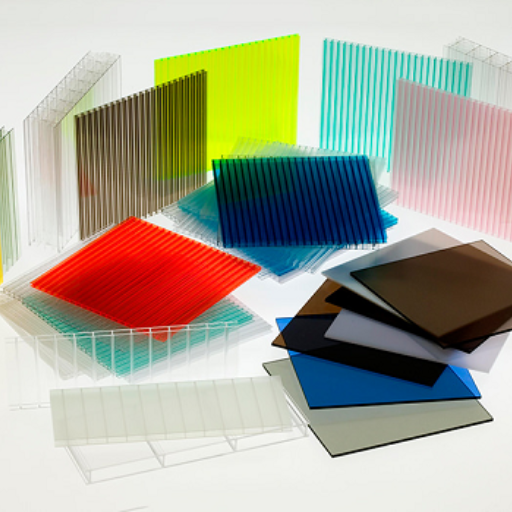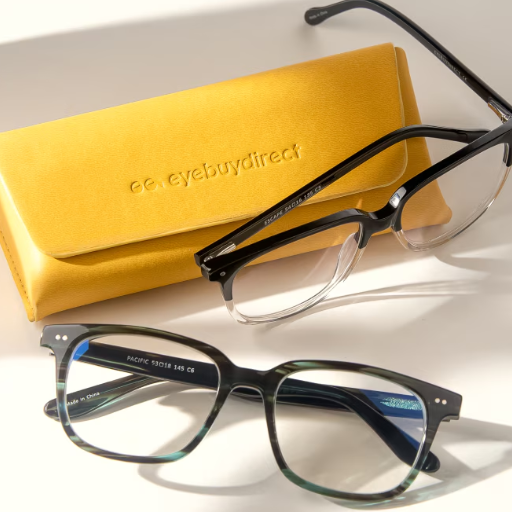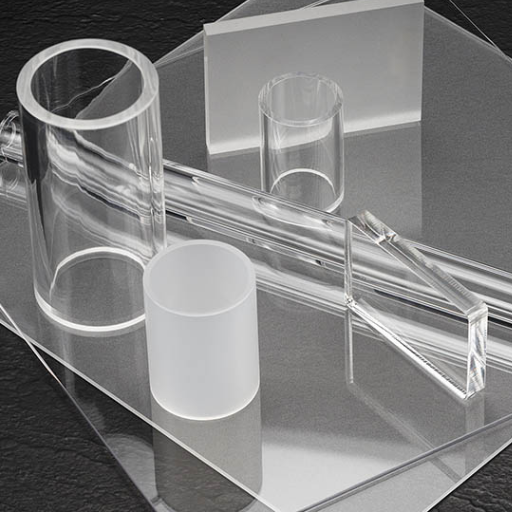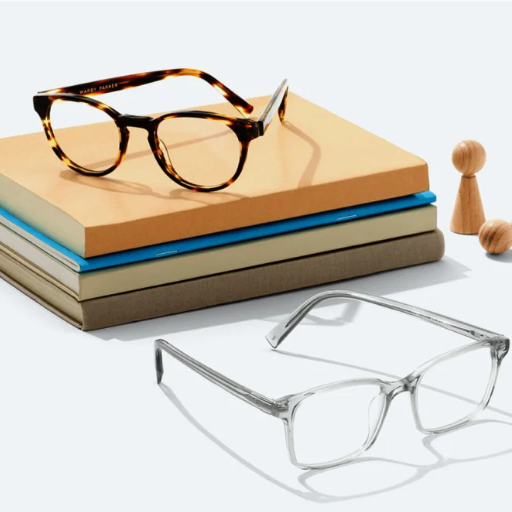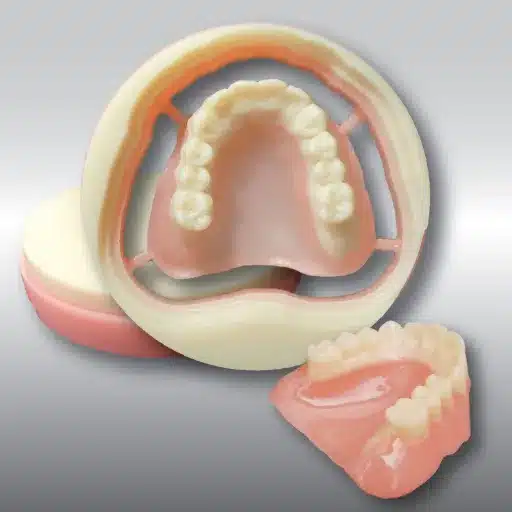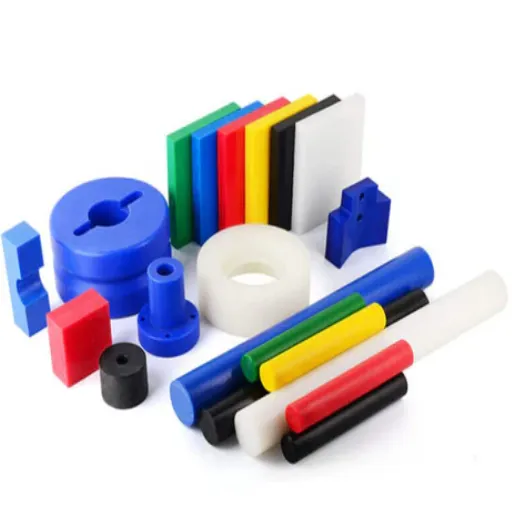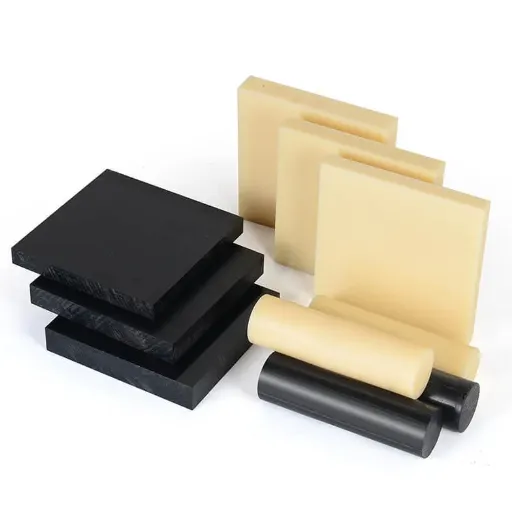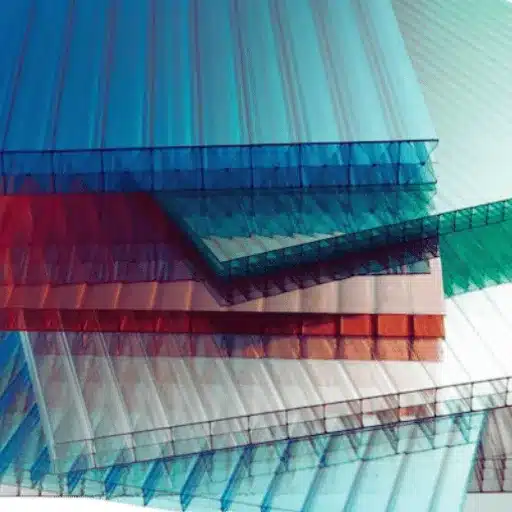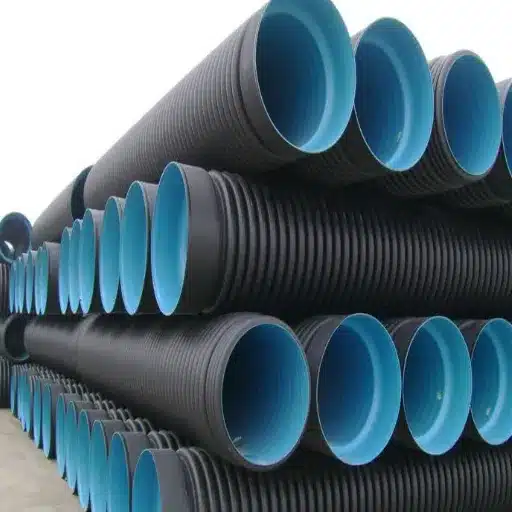Polymethyl methacrylate (PMMA) has transformed dental practice, emerging as one of the most innovative and reliable materials in the industry. Known for its exceptional toughness, biocompatibility, and versatility, PMMA is utilized across a comprehensive range of applications—from dentures and dental implants to advanced restorative techniques. This comprehensive guide explores PMMA’s pivotal role in shaping the future of dentistry, benefiting both patients and dental professionals. Discover the groundbreaking changes PMMA has introduced and the emerging dental technologies that are making the impossible, possible.
Introduction to PMMA in Dentistry
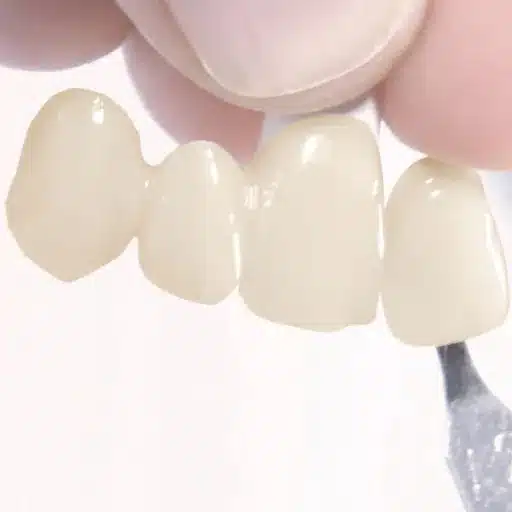
What is PMMA?
Polymethyl methacrylate (PMMA) is a synthetic resin with multiple applications, frequently employed in the dental field due to its advantageous properties: durability, biocompatibility, and ease of fabrication. This transparent thermoplastic, widely recognized as acrylic or acrylic glass, extends its utility from dental prosthetics to comprehensive restorations.
PMMA serves primarily in manufacturing dentures, temporary crowns and bridges, and orthodontic appliances. Its lightweight nature and tooth-like appearance make it the material of choice for both patients and dental professionals. Recent developments in PMMA technology continue producing new formulations that demonstrate enhanced strength and superior wear resistance, expanding its applications throughout modern dental practice.
🦷 Primary Dental Applications
- Denture Base Material: Foundation for complete and partial dentures
- Temporary Restorations: Crowns and bridges during treatment phases
- Orthodontic Devices: Various appliances for tooth alignment
- Custom Trays: Impression trays for accurate dental molds
History of PMMA in Dental Applications
Polymethyl methacrylate (PMMA) has served as a dental material since the 1930s when it was first introduced. Initially used as a denture base material, PMMA quickly gained favor due to its excellent appearance, biocompatibility, and easy molding properties. Through subsequent decades, the material underwent refinement through continuous manufacturing technique improvements and polymer chemistry innovations, yielding enhanced strength and wear resistance that provided long-term reliability for dental prostheses.
📈 Modern PMMA Advancements
Recent data reveals that PMMA continues advancing with promising future applications in modern dentistry. The introduction of CAD/CAM (computer-aided design and computer-aided manufacturing) technologies has enabled PMMA production into high-performance milled discs and resins, facilitating greater precision in temporary crown and bridge manufacturing as well as dental restorations. Furthermore, PMMA can now be combined with nanoparticles or reinforced fibers to improve mechanical properties, yielding products with enhanced durability and extended clinical performance. These technological innovations prove that PMMA remains at the forefront of contemporary dental practices where demand for restorative and prosthetic dentistry continues increasing.
Importance of PMMA in the Dental Industry
PMMA (Polymethyl Methacrylate) remains one of the most important materials in the dental industry due to its numerous applications and adaptable characteristics. Recent advancements have primarily targeted mechanical strength and biocompatibility enhancement, making the material suitable for both temporary and permanent dental restorations.
Based on current trends and insights, there has been an increase in searches for “high-performance dental PMMA materials” and “durable PMMA dental solutions,” mirroring demand from both consumers and clinics for innovative PMMA-based restoratives. This interest signifies the material’s importance in providing cost-effective, personalized, and precise dental care as it evolves alongside technological advancements and increasing patient expectations. PMMA reinforces its position not only through performance but also by meeting demand for environmentally friendly and effective solutions in current dental practice.
Properties of PMMA
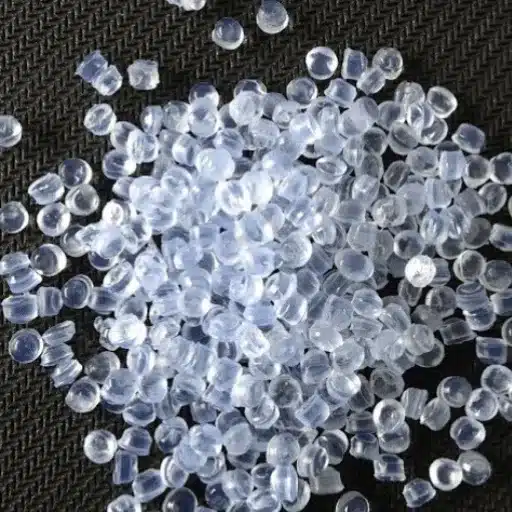
PMMA Characteristics
Polymethyl methacrylate, commonly abbreviated as PMMA, possesses a diverse set of properties making it widely used in dentistry and other fields. Known for its optical transparency, PMMA actually competes with glass in this regard, yet it is significantly lighter while simultaneously offering greater impact resistance than glass. The material also demonstrates excellent biological tissue compatibility, making it safe and reliable for both medical and dental applications. Moreover, PMMA exhibits excellent thermal and chemical stability, meaning it maintains its properties and quality even under extreme conditions.
| Characteristic | Description | Dental Benefit |
|---|---|---|
| Optical Transparency | 92% light transmission, comparable to glass | Natural tooth-like appearance for aesthetic restorations |
| Lightweight | Significantly lighter than glass and ceramics | Comfortable for patients wearing prosthetics |
| Impact Resistance | Superior to glass in shock absorption | Reduced risk of fracture in dental prostheses |
| Biocompatibility | Excellent compatibility with biological tissues | Safe for long-term oral applications |
| Thermal Stability | Maintains properties under temperature variations | Reliable performance in oral environment |
| Recyclability | Can be reprocessed effectively | Environmentally sustainable material choice |
The combination of cutting-edge technology with PMMA truly enables the material to shine. For example, recent 3D printing technologies produce even more precise dental restoration models, making them simultaneously more functional and attractive. Growing consumer interest, reflected in search queries, reveals higher openness to PMMA in the sustainability context. PMMA’s recyclability and wear resistance align with current demands for environmentally friendly solutions, granting it further recognition as a major material in future-oriented dental and industrial sectors.
PMMA Mechanical Properties
Polymethyl methacrylate (PMMA) is renowned for its superior mechanical characteristics, including high impact resistance, clarity, and dimensional stability. Typical tensile strength of PMMA reaches approximately 70 MPa with flexural strength ranging from 90 to 120 MPa, making it ideal for applications requiring both strength and flexibility. PMMA also demonstrates high resistance to natural weathering and UV light, which increases material lifespan in outdoor and industrial conditions while enhancing usability.
🌍 Sustainability & Mechanical Performance
Recent research shows increasing interest in PMMA’s mechanical characteristics in connection with sustainability. A frequently raised question concerns whether PMMA’s longevity makes it more environmentally friendly by reducing replacement frequency. The answer lies in PMMA’s extraordinary combination of mechanical toughness and recyclability. Its performance longevity over extended periods leads to significantly reduced waste creation, aligning with eco-friendly methods. The combination of long lifespan and constant development in recycling and recovery methods makes PMMA an excellent choice for both environmental and performance priorities.
PMMA Benefits
Polymethyl Methacrylate, commonly known as PMMA, offers a wide range of advantages making it ideal for various applications. One major attribute is outstanding optical clarity, allowing light transmission up to 92%—higher than most glass types. This characteristic, combined with being noticeably lighter and tougher than glass, opens possibilities for applications where transparency is paramount, such as windows, lenses, or display screens.
✨ Optical Excellence
Up to 92% light transmission with glass-like transparency, yet lighter and more impact-resistant for superior aesthetic results.
☀️ Weather Resistance
Prolonged UV light and extreme temperature exposure cause no effect, making it ideal for various environmental conditions.
♻️ Eco-Friendly
Excellent recyclability and reprocessing capabilities align with increasing environmental regulations and sustainability goals.
Research data indicates that construction, automotive, and medical device industries increasingly turn to PMMA as they find it offers the optimal combination of versatility, performance, and sustainability.
Types of PMMA Used in Dental Applications

Dental Acrylic Resins
Dental acrylic resins have become a vital component in contemporary dentistry for several reasons, primarily their adaptability, which closely relates to durability and biocompatibility. These resins serve as the primary material for dentures, orthodontic appliances, and temporary crowns, with their lightweight yet strong properties making them suitable for diverse dental applications.
Recent statistics reveal that research in this field remains highly active, with main focus on improving aesthetic appeal and reducing microbial growth possibility. One commonly raised question: “Are dental acrylic resins safe for long-term use?” The short answer—yes—dental acrylic resins demonstrate excellent safety and performance characteristics for long-term applications. Continuous innovation, including improved polymer blend utilization, ensures the industry meets both professional and patient needs.
Modified PMMA Variants
For health and performance reasons, modified PMMA (Polymethyl methacrylate) variants are advancing in safety profiles and application fields. These modifications may include copolymers and/or additives conferring qualities such as resistance to microbial development along with enhanced durability and flexibility.
❓ Frequently Asked: Are Modified Variants Safer?
Recent search patterns reveal this question as one of the most frequently asked. The resounding answer is yes—experiments demonstrate that modified PMMA variants reduce material wear and tear risk while improving biocompatibility. These improvements result in better patient outcomes and prosthetic longevity, offering a superior and safer solution for the dental market.
Comparing PMMA Types for Dental Products
In deciding between classical PMMA and reformed variants for dental purposes, selection is heavily influenced by future application and patient expectations. Current statistics from internet searches reveal numerous users are specifically interested in knowing which type offers superior durability and better safety profiles.
| PMMA Type | Processing Method | Primary Applications | Key Advantages |
|---|---|---|---|
| Heat-Cured PMMA | Heat polymerization | Long-lasting dental prosthetics, denture bases | Superior strength, durability, color stability |
| Cold-Cured PMMA | Chemical polymerization | Laboratory and clinical repairs, temporary restorations | User-friendly, quick processing, no heat required |
| Light-Cured PMMA | Light polymerization | Immediate placement applications, custom trays | Quickest setting times, precise control |
| Modified PMMA | Enhanced formulation | Permanent restorations, high-stress areas | Better wear resistance, improved biocompatibility, thermal stability |
Modified PMMA clearly emerges superior due to its enhanced characteristics. Research results confirm these modified types demonstrate better wear and tear resistance, improved thermal and chemical stability, and higher biocompatibility compared to traditional variants. Consequently, they prove especially favorable for permanent dental restoration, preventing complications through risk reduction while providing strength—the safest and most effective solution for patients.
Applications of PMMA in Dentistry

Fabrication of Dentures
PMMA plays a vital role in denture production owing to its distinctive features: lightweight, strong, aesthetically pleasing, and easy to work with. The process primarily includes first obtaining an accurate impression of the patient’s oral cavity, which serves as a mold for shaping the dentures. The material is then processed and formed into the final configuration that ensures the patient’s exact fit and natural appearance.
Modern Denture Fabrication Process
Accurate Impression
Precise oral cavity impressions captured for custom mold creation
CAD/CAM Design
Computer-aided design and manufacturing for enhanced precision and shortened production duration
PMMA Processing
Material processing with modified PMMA featuring enhanced antimicrobial properties
Final Fitting & Finishing
Ensures patient’s exact fit, natural appearance, and improved oral hygiene through infection reduction
Recent developments highlight the utilization of CAD/CAM (Computer-Aided Design and Manufacturing) technology in denture making. This contemporary method allows for exceptional precision, shortened production duration, and improved patient satisfaction. Additionally, ongoing projects focus on modified PMMA with better antimicrobial features to enhance oral hygiene by reducing infection risk from prolonged denture use. This demonstrates continuous evolution in dental resources and methods, benefiting patients with superior outcomes.
Crowns and Bridges Made from PMMA
PMMA (Polymethyl Methacrylate) is gradually becoming the primary material for creating crowns and bridges due to its flexibility, toughness, and aesthetic appeal. PMMA-based dental prosthetics produce natural teeth-like products that are lightweight while demonstrating excellent durability. CAD/CAM (Computer-Aided Design and Manufacturing) technology stands as one major contributing factor enabling precise contouring of PMMA crowns and bridges that fit comfortably and unobtrusively into a patient’s mouth.
Recent data reports indicate that PMMA is valued for its biocompatibility and processing ease, making it the preferred material for both temporary and permanent dental restorations. Moreover, innovative PMMA materials possessing enhanced color stability and abrasion resistance have recently been developed, ensuring these prosthetics maintain their aesthetic quality throughout their lifetime. When compared to alternative materials, PMMA provides an affordable, effective, and high-quality option satisfying patient demands in both functional and cosmetic dentistry.
Other PMMA-Based Dental Products
PMMA-based dental products extend beyond classic restorations into innovative areas including their application in dentures, temporary crowns, bridges, orthodontic appliances, and more. Innovations in 3D printing technology have elevated PMMA’s dental use, making it possible to produce highly precise and customized dental devices.
🔬 Expanding PMMA Applications
- Custom Impression Trays: Precise fit for accurate dental impressions
- Orthodontic Appliances: Retainers and alignment devices
- Provisional Restorations: Temporary solutions during treatment phases
- Surgical Guides: Precision tools for implant placement
- Occlusal Splints: Night guards and bite correction devices
Latest reports indicate that PMMA materials are being combined with advanced composites to develop new qualities that balance durability and aesthetics, addressing the expanding range of patient requirements. This ongoing development continues fortifying PMMA’s position as an important material in contemporary dental technologies.
Challenges and Limitations of PMMA

Wear and Discoloration Issues
One major issue regarding PMMA use in dentistry is that it’s a material which can experience erosion and discoloration during its lifespan. Recent research indicates that if teeth are not properly maintained, pH balance fluctuations, diets containing coloring agents, and smoking could all lead to discolored restorations and aesthetic reduction.
| Challenge | Contributing Factors | Solutions |
|---|---|---|
| Discoloration | • Dietary staining agents • Smoking and tobacco use • Poor pH balance • Inadequate cleaning |
• Advanced PMMA composites • Protective coatings • Regular professional cleaning • Color-stable formulations |
| Surface Wear | • Microscopic abrasions from chewing • Rough surface texture • Continuous mechanical stress |
• Wear-resistant formulations • Proper surface finishing • Modified PMMA variants • Scheduled maintenance |
Besides that, microscopic abrasions from chewing can wear the smooth surface, potentially resulting in discoloration. Although new techniques involving PMMA composites and protective coatings have been developed to counteract these problems, regularly scheduled dental cleaning and proper care remain necessary for the material to last long while maintaining its quality.
Problems in Handling and Finishing
The handling and processing of PMMA-based materials present various challenges that can affect their overall performance and lifespan. One significant problem is the material’s sensitivity to heat during cutting and shaping. Excessive heat can cause deformations, internal tensions, or even microcracks which collectively weaken the material. Moreover, PMMA’s impact resistance is not extremely high, so the material can chip or break during improper handling or in high-stress areas.
💡 Best Practices for PMMA Handling
- Precision Machining: Use low-speed tools to minimize friction and heat generation
- Cooling Techniques: Apply water or air cooling during cutting or shaping to facilitate heat dissipation
- Proper Storage: Maintain appropriate storage conditions to prevent material degradation
- Careful Transport: Use protective packaging to avoid damage during handling
- Professional Training: Ensure technicians understand material properties and limitations
Recent data reveals that users frequently ask about solving these issues in practice. The solution involves precision machining techniques, low-speed tools, and friction reduction. Cooling techniques like water or air cooling help heat dissipation during cutting or shaping. Good storage and transport practices also prove important in preventing damage, ensuring the material remains in perfect condition for use. Understanding these issues is essential for professionals working with PMMA to maximize its functional and aesthetic qualities.
Difficulties in Some Dental Applications
Although widely used, PMMA (polymethyl methacrylate) has certain drawbacks in specific dental applications. The primary drawback is its relatively low fracture toughness, which makes it prone to splitting or breaking under high stress or impact. This limitation explains why molar restorations represent one area where PMMA cannot be readily applied due to excessive force. Additionally, the material can become less wear-resistant over time, gradually losing efficacy as a dental prosthetic material, especially for patients with bruxism (teeth grinding).
Another disadvantage of PMMA is inadequate thermal stability in certain conditions. Generally stable in the oral environment, excessive heat or poor adjustment methods applied during device fabrication can cause bending or deformation, affecting appliance fit and function. Plus, PMMA lacks inherent antimicrobial properties, which could lead to dental appliances made of PMMA more easily developing infections or plaque buildup. This emphasizes the importance of maintaining good oral hygiene and scheduling regular maintenance visits.
While material science advances are facilitating solutions to some of these issues, dentists and dental technicians must still deliberate on whether to use alternative materials or reinforce PMMA with other materials when designing products for patients with specific needs or demanding oral conditions.
Recent Innovations in PMMA Technology
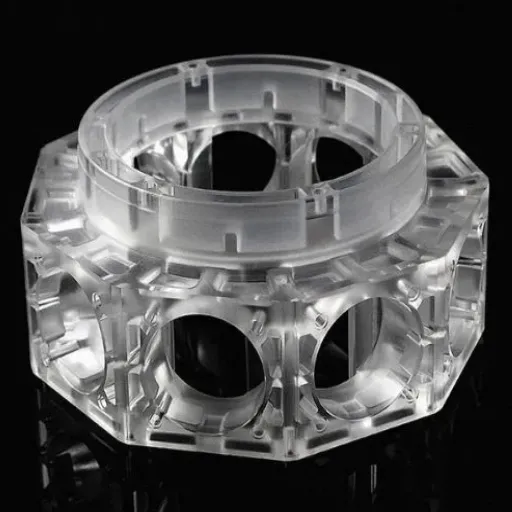
Enhancements in PMMA Formulations
Progressive developments in PMMA formulations have caused remarkable increases in mechanical properties and significant performance improvements under extreme conditions. Currently, scientists are combining nanoparticles and reinforcing agents with PMMA to increase strength, wear resistance, and durability while retaining lightness and transparency.
🔬 Cutting-Edge PMMA Innovations
Case in point: the addition of either zirconia or glass fibers to PMMA matrices has resulted in reduced susceptibility to fractures, making it a more reliable option for dental applications. Moreover, the introduction of antimicrobial agents into the formulation prevents bacterial growth, solving hygiene issues associated with the material. These improvements demonstrate dedicated efforts in developing PMMA to be optimally suited for medical and dental requirements, ensuring it remains both patient-friendly and capable of withstanding strict clinical conditions. This advancement signifies that material science, through recent research and technological insight, continuously raises the bar for healthcare synthetic polymers.
Emerging Trends in PMMA Dental Applications
The dental applications of PMMA (Polymethyl Methacrylate) are experiencing dramatic changes as studies bring better materials science and practitioners’ needs closer together. The most significant trend involves applying nanotechnology for PMMA benefit. Through nanoparticle utilization, researchers aim to make composite materials tougher, more wear-resistant, and simultaneously less prone to bacterial production, effectively managing fracture and hygiene issues.
⚡ Nanotechnology Integration
Nanoparticles enhance material toughness, wear resistance, and bacterial resistance for improved fracture prevention and hygiene.
🖨️ 3D Printing Revolution
Digital workflows enable quicker, more precise production of patient-specific prosthetics considering individual anatomy.
🧬 Bioactive PMMA
Investigation into tissue regeneration potential and better acceptance by natural teeth and gums.
Another area receiving substantial investment is integrating 3D printing into treatment processes. Dental prosthetics and appliances can now be manufactured to patient-specific requirements, considering every anatomical detail of the patient’s teeth through this method. Yet another encouraging trend is investigating bioactive PMMA potential, through which tissue regeneration and better integration with natural teeth and gums become possible. Such innovations are powered by dentists wanting their patients to have more durable, cost-effective, and aesthetically pleasing solutions. Advancements in digital workflows combined with material science will bring widespread adoption of next-generation PMMA in clinical practices and dental laboratories, changing the face of modern dentistry.
Influences of Innovations on Dental Practices
The introduction of modern PMMA and other dental materials has completely transformed dental practice perspectives, now characterized by greater precision, speed, and patient satisfaction. Digital dentistry represents one visible manifestation of this change, with increased interest reflected in search trends for terms like “biocompatible dental materials” and “3D printing in dentistry.”
Dentists can now smoothly transition to digital workflows as new materials and methods enable precise dental prosthesis creation using CAD/CAM and 3D printing technology, reducing production time while improving restoration quality. Technology combined with next-generation materials empowers dental practitioners to render treatments that are not only durable but also minimally invasive and specifically designed according to individual patient needs, thus laying new standards in modern dental care.
Frequently Asked Questions
What are the Properties of PMMA in Dental Applications?
PMMA, polymethyl methacrylate, is one of the most popular materials in the dental field because of its superb properties. The material is lightweight, sturdy, and has excellent aesthetic features that closely resemble natural teeth. The mechanical characteristics of PMMA such as tensile strength and impact resistance are the main determinants of long-lived dental prostheses. Moreover, PMMA is compatible with body tissues, making it the material of choice for surgeries and treatments. By modifying PMMA, its excellent properties can be further improved, making it suitable for even more dental applications.
What Types of PMMA are Used in Dentistry?
Dentists work with different PMMA varieties, including heat-cured, cold-cured, and light-cured PMMA. Heat-cured PMMA is generally used for making temporary and long-lasting dental prosthetics, while cold-cured PMMA is considered more user-friendly in dental laboratories and clinics. Light-cured PMMA provides the quickest setting times and is the best choice for applications requiring immediate placement. The properties of these types differ, and each is chosen based on the particular needs of the dental procedure being performed. Dental professionals must understand these material types to select the right one for their applications.
How is PMMA Used in Dental Products?
PMMA has extensive applications in various dental products including partial dentures, temporary crowns, and dental acrylic resin. Its versatility enables it to be sculpted and shaped into various forms, making it suitable for a wide range of restorative materials. The manufacturing of PMMA dental products involves processes that guarantee the final product meets required standards of strength and aesthetics. Moreover, PMMA dental use is associated with providing patients comfortable and functional dental solutions. The acceptance of this material by dentists is rising because of its wonderful properties.
What are the Mechanical Properties of PMMA?
The mechanical characteristics of PMMA are decisive for its applications in dentistry. PMMA is a material with excellent tensile strength, meaning it can bear the forces of biting without breaking. Its resistance to impact ensures forever the durability of dental prostheses and restorations. Low thermal conductivity of PMMA makes it patient-friendly as it does not transfer heat or cold quickly, preventing discomfort. Thus, these mechanical properties constitute key factors why PMMA is used as a restorative material, making PMMA an indispensable element in modern dentistry.
Why is PMMA Considered an Ideal Material in Dentistry?
PMMA is considered an ideal material in dentistry due to its excellent combination of aesthetics, mechanical strength, and biocompatibility. The property of PMMA that allows it to closely imitate natural tooth appearance makes it a prime material selection among dental professionals for creating crowns or substitutes. Furthermore, PMMA is comparatively less complicated to handle, which leads to faster manufacturing of final products in dental laboratories. With many different chemical alterations to PMMA, its range for diverse dental applications can be further extended. Overall, the characteristics that PMMA possesses and its advantages over other materials make it the dental material of choice.
Advantages and Disadvantages Comparison
| Advantages | Disadvantages |
|---|---|
| ✓ Excellent biocompatibility and tissue tolerance | ✗ Susceptible to discoloration over time |
| ✓ Lightweight and comfortable for patients | ✗ Lower fracture toughness compared to some materials |
| ✓ Cost-effective compared to ceramic or metal alternatives | ✗ Wear resistance diminishes over extended periods |
| ✓ Excellent aesthetic qualities mimicking natural teeth | ✗ Heat sensitivity during fabrication |
| ✓ Easy to process, modify, and repair | ✗ Lacks inherent antimicrobial properties |
| ✓ Compatible with CAD/CAM and 3D printing technologies | ✗ Not suitable for high-stress areas (molars) |
| ✓ Recyclable and environmentally sustainable | ✗ Requires regular maintenance and professional cleaning |
Reference Sources
📚 Academic and Technical References
Academia.edu
A comprehensive overview of PMMA as a key material in both medical and dental applications, highlighting its role in enhancing patient outcomes.
Harvard University – NASA ADS Abstract
A study on the mechanical and physical properties of PMMA-based composites in dental applications, showcasing recent advancements.
Xavier University Library
Research on PMMA-eggshell composites, focusing on their mechanical and physical properties for dental applications.







